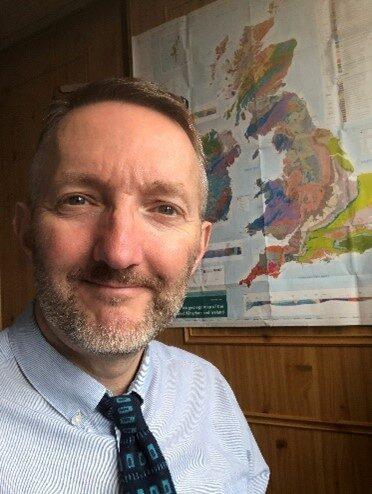British Geological Survey Speaker Interview
Industrial Minerals Geologist
Clive Mitchell is a senior Industrial Minerals Geologist at the British Geological Survey (BGS, since 1989) responsible for mineral resource projects, an engaging geoscience communicator and bestselling author of ‘The Pebble Spotter’s Guide’(published by the National Trust). Current research focus is on battery raw materials, especially graphite resources in Africa, calcined clay for low carbon cement, mineral waste and sand mining.
- Please give us a brief overview of your recent work in Zambia and the focus of your presentation at ZIMEC 2025?
The British Geological Survey (BGS) have been actively supporting the work of the Zambian Geological Survey Department (GSD) and the Ministry of Mines and Minerals Development(MMMD). Personally, I have been working in Zambia for over 30 years with my first work with the GSD in 1991. The current BGS work is in support of the National Critical Minerals Strategy of the MMMD with a focus on helping to develop the Critical Raw Material capacity of the GSD as part of the project “Supporting Capability for Critical Minerals in Zambia”(funded by the UK Foreign, Commonwealth & Development Office, FCDO). The BGS are working with the GSD to develop acritical raw materials guide that will cover copper, cobalt, coltan, graphite, lithium, manganese, Nickel, Rare Earth Elements (REEs), sugilite, tin and uranium in Zambia. The GSD Museum has yielded many samples that will be used to illustrate the guide to help educate exploration companies, academia, decision makers and the public on the resources of these critical minerals in Zambia. Other BGS teams are working in Zambia with the GSD to support the laboratory capacity and to enable archived Zambian minerals information to be more accessible. The work of the project, in particular the Critical Raw Materials guide will be the focus of the presentation with the aim of having hard copies of the guide available at the conference for delegates (digital copies will also be available).
- We have seen a surge in exploration and development across the region over the last few years specially for energy transition minerals, do you see this continuing over the medium and long term?
The continuing and growing demand to supply the raw materials needed for the energy transition to a low-carbon society will ensure that the focus will remain on the critical and battery raw materials in the medium to long term. The pressure to find these resources will only increase as the supply of critical and battery raw materials is projected to be far outstripped by demand. The BGS support of the Zambian Geological Survey Department (GSD) is one example of the work of the British Geological Survey (BGS) to support African governments engage with the exploration and development of critical raw materials. The geological understanding of resources, reconnaissance exploration, laboratory characterisation and freely accessible publication of minerals information and maps are ways in which national geological surveys in Africa can play a valuable part in the discovery and development of these critical and battery raw material resources. National geological surveys across Africa will need continued support and capacity development to meet this challenge and to remain relevant in a rapidly changing landscape of resource development.



